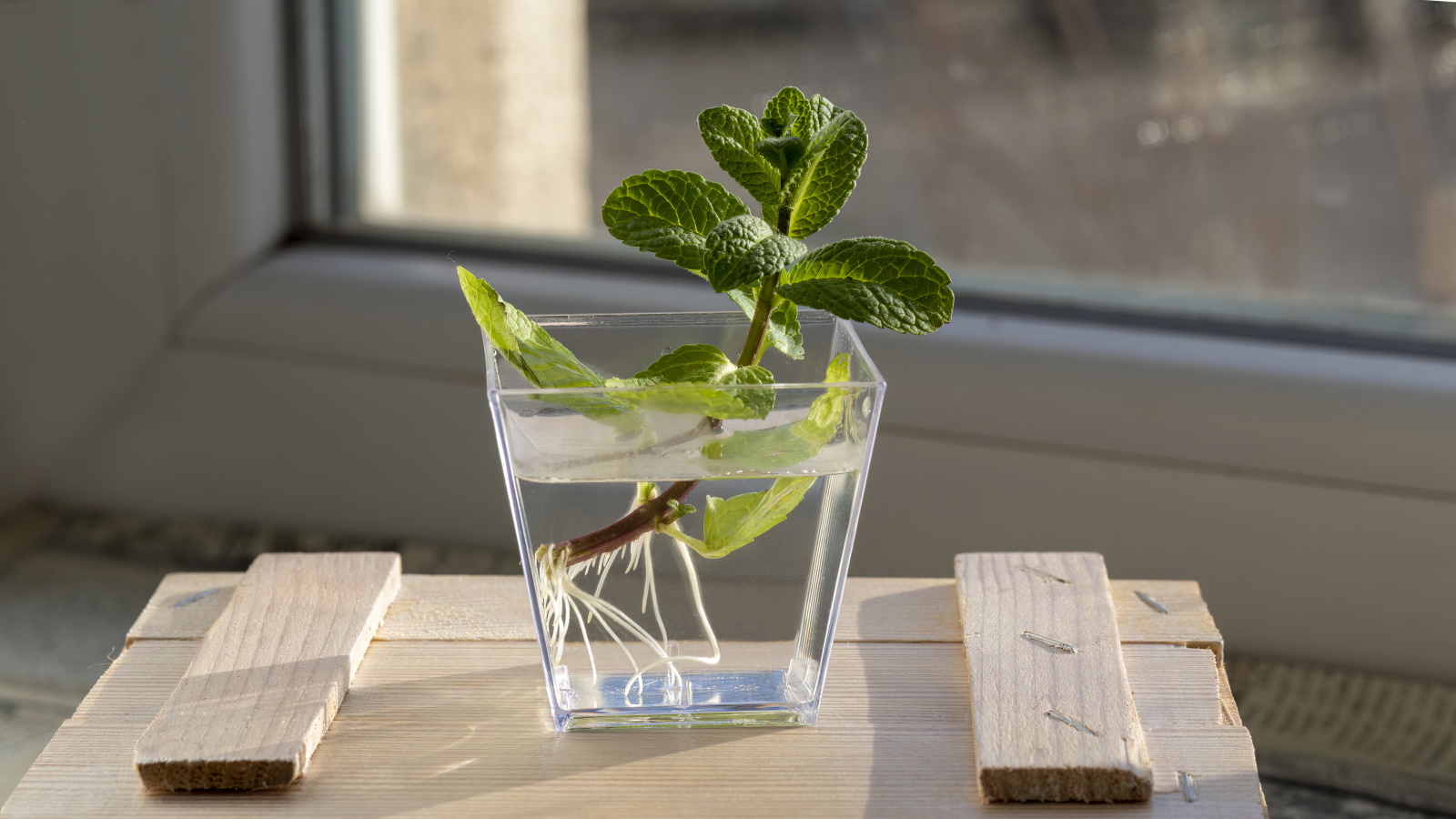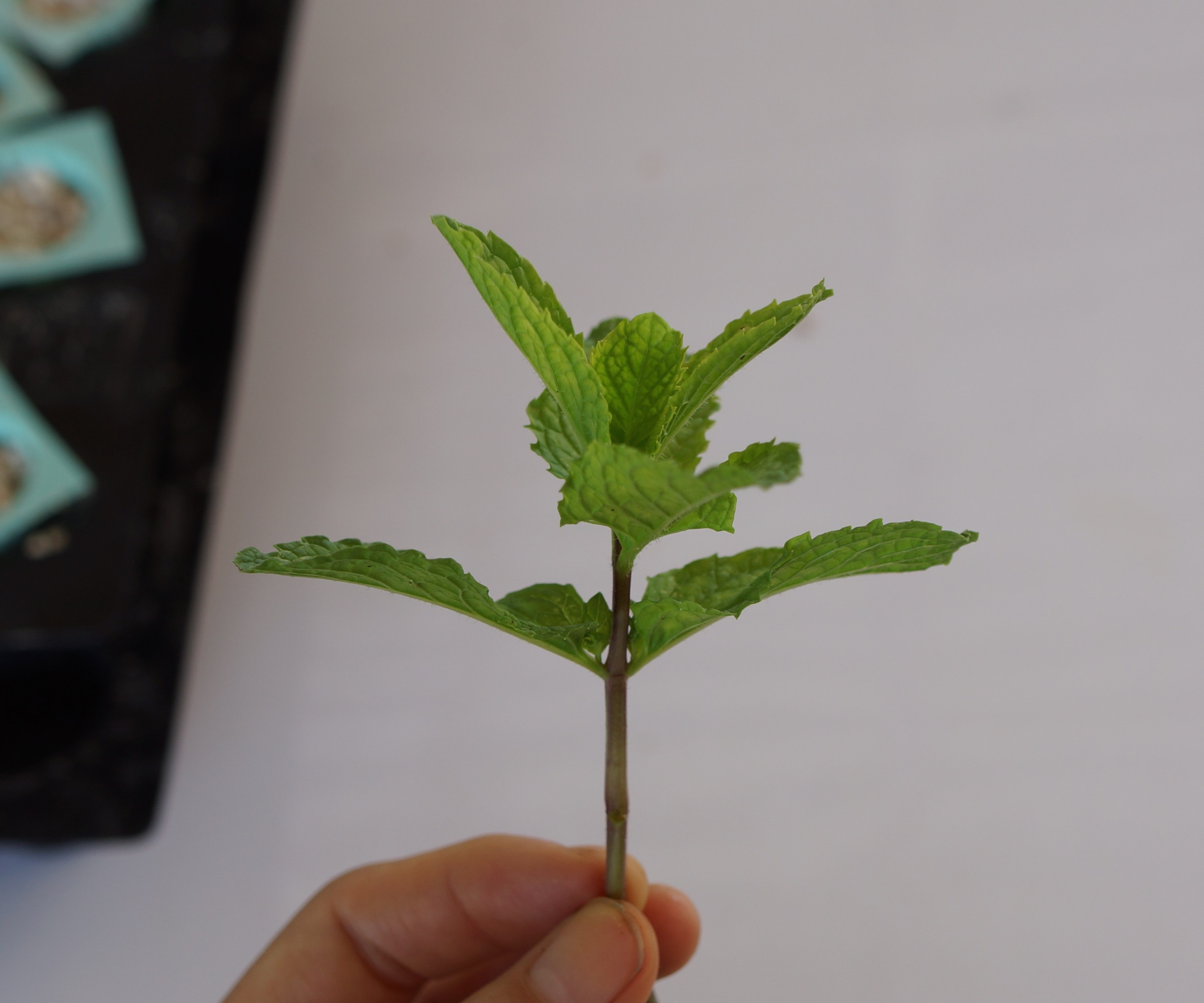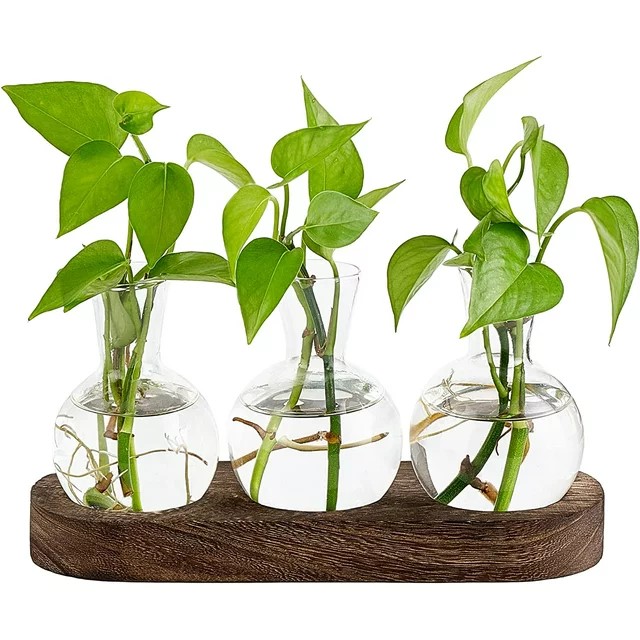How to propagate mint – 2 quick and easy methods to grow your herb collection
Garden experts share simple and speedy ways to propagate mint, for a bounty of aromatic herb plants this year


Mint is a versatile herb that looks attractive in pots and borders but can also be used in cooking and medicine. No kitchen garden or backyard is complete without a selection of aromatic herbs, and mint is certainly one of my favorites to grow.
If you are seeking herb garden ideas this year, and you already have one or two mint plants in the backyard, why not consider increasing your mint supply by propagation?
Propagating plants is an ideal option for those wanting more herb plants for the backyard or to give as gifts to neighbors or gardener friends. Here, we share advice from a professional gardener on how to propagate mint, with two easy and cost-effective options that will help you make more aromatic herbs this year.

How to propagate mint
Renowned as a herb that is easy to grow and low maintenance, mint is the ideal plant for filling your backyard with fragrant foliage that can be used in your spring and summer suppers.
Helpfully, for gardeners wondering how to propagate herbs, mint is a fool-proof option, meaning that anyone can increase their herb plants quickly and simply, all without spending any money.
Growing mint cuttings in water

'Growing mint from seed is not usually recommended as seed plants do not grow true to parent plants,' says Susan Betz, herb expert and Honorary Master Gardener. This means that seeds can often vary from the parent plant, so gardeners can never be sure what the seed will grow into. It is far easier to propagate mint by cuttings during spring and summer, a simple process that can be done at home with very little equipment needed.
'Mint is a herb known for its ease of propagation and can be readily rooted in a glass of water,' Susan says. First, identify the mint plant that is to be propagated. 'Use your eyes and nose when selecting a mint plant,' Susan continues, picking a plant that you like the look and that has an agreeable scent. One of my favorites is pineapple mint, with a fruity taste that works in drinks, salads and sauces. Pineapple mint is available to buy as a plant at Burpee.
Design expertise in your inbox – from inspiring decorating ideas and beautiful celebrity homes to practical gardening advice and shopping round-ups.
Once you have selected your mint plant, cut several young, green stems that measure approximately 4 to 6 inches. Strip the bottom half of the stem, removing all foliage. Following this, place the stems in a vase or glass of water and place them in a warm, sheltered position, such as on the kitchen counter.
Do not place the cuttings too close to a window, as bright, direct sunlight may damage the cuttings, particularly in the summer months. You should begin to see small white roots within 1 week.
After 2 weeks, a good root system should have been established. You can then pot up each cutting into a small pot filled with a well-draining potting mix. Water your pots and place them outside in a cold frame or greenhouse. After 6 to 8 weeks, they should be ready to plant into pots in the yard or pass on to friends and family as gifts.
It is worth remembering that mint plants are vigorous plants. I always recommend growing mint plants in pots, whereby you can control the spread. Alternatively, you can grow mint in plastic containers that you then sink (or plant) in the garden border. Growing in this way will allow you to slow or control the spread of your mint crops.

Susan Betz is an author, garden communicator, lecturer, and conservationist specializing in herbs and native plants. She has been actively growing and using herbs to educate the public about gardening and the natural world for over 35 years. She is an Honorary Master Gardener and a member of the International Herb Association, Garden Communicators, the Ecological Landscape Alliance, and the National Garden Bureau. Susan is a life member of the Herb Society of America.
Dividing mint plants

'Another simple and effective method is to reproduce mint by root division,' Susan says. 'Division is a method of multiplying plants by splitting large mature clumps into smaller plants.'
'Herbs that spread by broadening basal clumps, like mint, are simple to divide to create new plants,' Susan continues. During fall, 'mint plants that have several years of growth can be lifted.'
Using a garden fork, gently tease the plant out of the soil and then use a sharp spade or pruning saw to split and divide the large clump into a series of new, smaller plants, ensuring that each new plant has both foliage and roots.
'New clumps should be replanted in full sun to part shade in well-drained soil,' Susan adds, 'keeping the soil moist but not wet.' If you are planting in pots, be sure to protect your new plants during the winter months, as they are more vulnerable compared to those herbs planted in the ground.

This variety is a sultry and refreshingly pungent as the name suggests. A delectably sweet topping for fruit and ice cream alike, also great for hot tea. As a general rule, plants in the mint family are best grown in containers as they can grow extremely vigorously when allowed to grow freely.
FAQs
Can mint be grown in shade gardens?
Mint plants can be grown in full sun or part shade. As with most herbs, mint plants prefer at least a few hours of sunlight each day, which helps the plant produce fragrant and delicious foliage. However, mint plants can survive in partially shaded areas, but are not recommended for growing in full shade.
Propagating mint by cuttings in spring or division in the fall is a simple and cost-effective way to produce more herbs for your backyard. If you have a smaller patio, terrace or balcony, consider growing other plants to make your balcony smell nice, such as roses, scented pelargoniums, or more mint varieties, for a beautiful and perfumed pot display.

Thomas is a Content Editor within the Gardens Team at Homes and Gardens. He has worked as a professional gardener for both public spaces and private estates, specializing in productive gardening, growing food and flowers. Trained in Horticulture at the Garden Museum, he has written on gardening and garden history for various publications, including The English Garden, Gardens Illustrated, Hortus, The London Gardener and Bloom. He has co-authored a Lonely Planet travel book, The Tree Atlas, due out in 2024.
